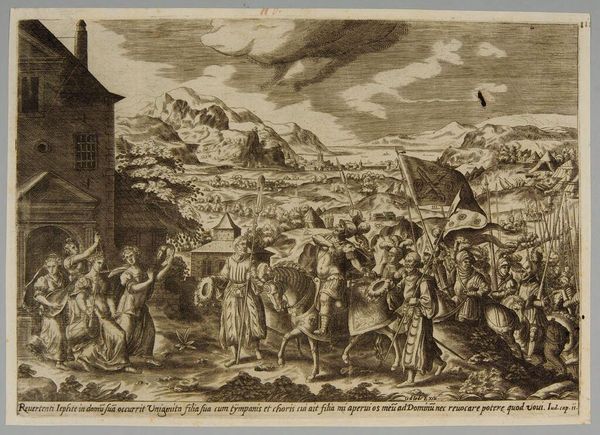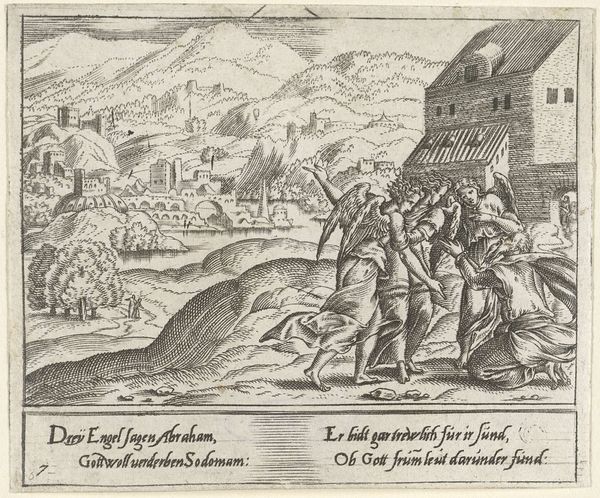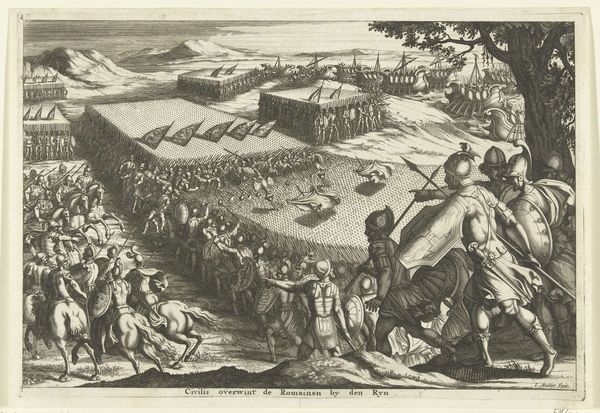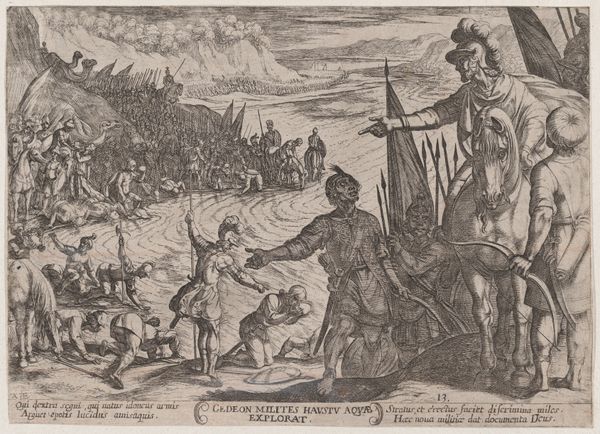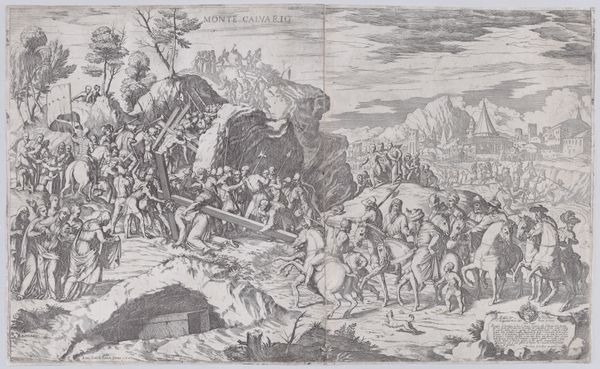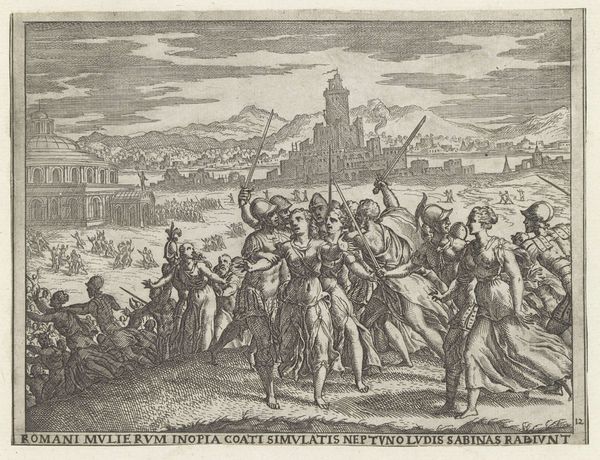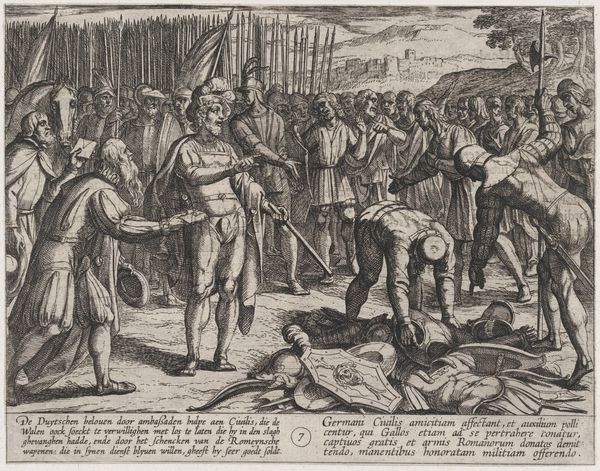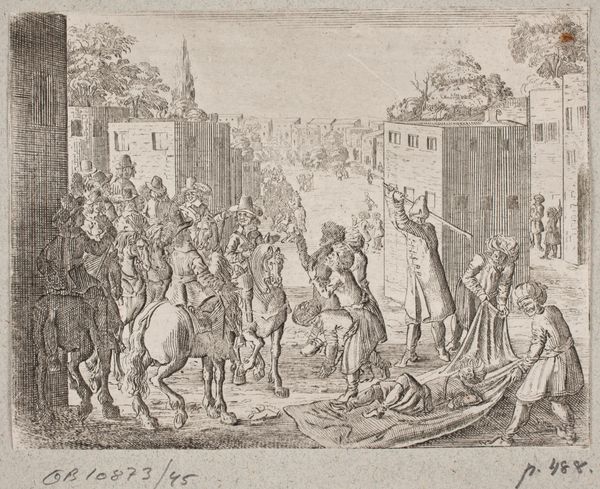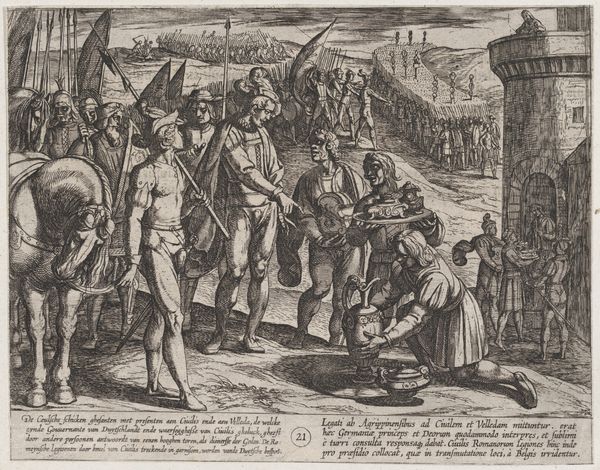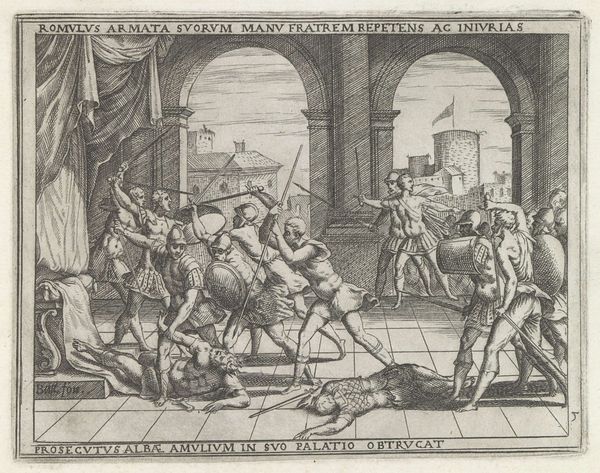
print, engraving
# print
#
perspective
#
geometric
#
history-painting
#
academic-art
#
italian-renaissance
#
engraving
Dimensions: height 135 mm, width 180 mm
Copyright: Rijks Museum: Open Domain
Giovanni Battista Fontana created this print, Romulus builds a city and names it Rome, in Italy around 1550-1580. It depicts the legendary founding of Rome, with Romulus overseeing the construction of the city walls. The image speaks to the 16th-century fascination with classical antiquity, a period when the ruins of the Roman Empire were being rediscovered and reinterpreted, with the city itself undergoing huge redevelopments. It highlights a prevailing interest in the origins of cities and states, and how these foundational myths served to legitimize contemporary political power. Fontana, an Italian artist, likely intended this work to reflect on the glory of Rome and its enduring legacy. To understand this print, we would need to research the cultural and political context of 16th-century Italy, examining both the art market and the power structures of Rome at that time. By doing so, we come to recognize how the art of the Renaissance and Early Modern period wasn't created in a vacuum, but was often deeply embedded in the social and institutional histories of its time.
Comments
No comments
Be the first to comment and join the conversation on the ultimate creative platform.
